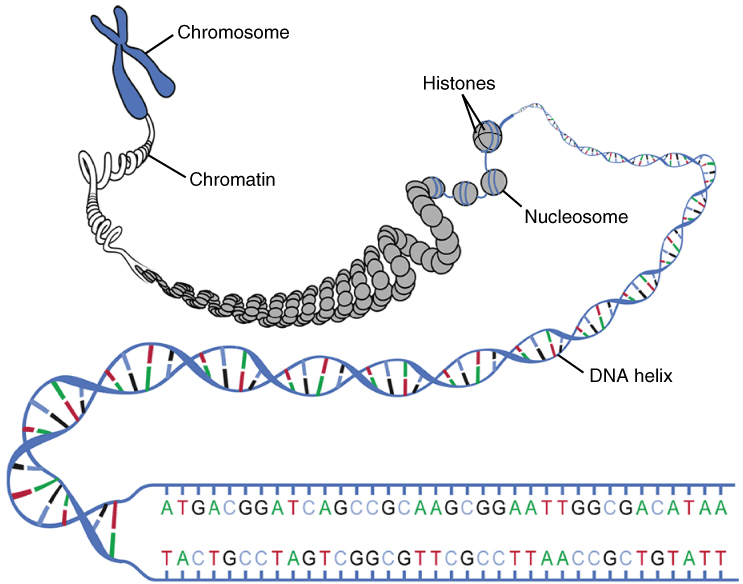
The Chromosome and its macro structure
On November 21, 1891, American geneticist Alfred Henry Sturtevant was born. Sturtevant constructed the first genetic map of a chromosome in 1913. Throughout his career he worked on the organism Drosophila melanogaster with Thomas Hunt Morgan. By watching the development of flies in which the earliest cell division produced two different genomes, he measured the embryonic distance between organs in a unit which is called the sturt in his honor.
Alfred Sturtevant – Early Years
Alfred Henry Sturtevant was born in Jacksonville, Illinois, United States, the youngest of Alfred Henry and Harriet Sturtevant’s six children. When Sturtevant was seven years old, his father quit his teaching job at Illinois College and moved the family to Alabama to pursue farming. In 1908, Sturtevant enrolled at Columbia University. During this time, he lived with his older brother Edgar, who taught linguistics at Columbia‘s Barnard College. As a child, Sturtevant had created pedigrees of his father’s horses. While in college, he read about Mendelism, which piqued Sturtevant’s interest because it could explain the traits expressed in the horse pedigrees. He further pursued his interest in genetics under Thomas Hunt Morgan,[8] who encouraged him to publish a paper of his pedigrees shown through Mendelian genetics. In 1914, Sturtevant completed his doctoral thesis under Morgan as well.
The Principles of Heredity
In 1865, Gregor Mendel published a paper entitled “Experiments in Plant Hybridization,” in which he proposed the principles of heredity [1]. There, he introduced the concept of dominant and recessive genes to explain how a characteristic can be repressed in one generation but appear in the next generation. Mendel also assumed that all hereditary factors worked independently of one another, which he explained in his law of independent assortment. Mendel’s paper did not achieve much acclaim and was largely forgotten until 1900. In 1883, German zoologist and pioneer of experimental embryology Wilhelm Roux argued that the linear structure of chromosomes has an impact of making sure daughter cells get equal amounts of chromosomal material. This was the beginning of the chromosome theory. Roux viewed his findings as argument that chromosomes contain units of heredity. During this time frame, Dutch botanist Hugo de Vries put forth a theory that persistent hereditary units are passed through generations and that each “unit” deals with a specific characteristic and the units can combine in different ways in the offspring.
The Foundations of Genetics
Sturtevant’s doctoral supervisor, Thomas Hunt Morgan, was the first to provide a working hypothesis for these exceptions. He postulated that genes that remained together while being passed from generation to generation must be located on the same chromosome. Sturtevant’s most notable discoveries include the principle of genetic mapping, the first reparable gene defect, the principle of underlying fate mapping, the phenomena of unequal crossing-over, and position effect. His main contributions to science include his analysis of genetic “linkage groups,” which became classical method of chromosome mapping that we still use today. For his Ph.D. thesis, Sturtevant published the world’s first genetic map. In 1913, he determined that genes were arranged on chromosomes in a linear fashion, like beads on a necklace. He also showed that the gene for any specific trait was in a fixed location (locus). The idea of gene linkage came to him in a flash one night. He and the other members of Morgan’s lab had been discussing a paper on the coat color of rabbits. Sturtevant realized that genes were linked in a series, and data as to how these genes were linked could be deduced by building the “right” Drosophila mutant. [3]
The Genes of Drosophila
Alfred Sturtevant stayed at Columbia as a research investigator for the Carnegie Institution of Washington. He joined Morgan’s research team in the “fly room”, in which huge advances were being made in the study of genetics through studies of the fruit fly Drosophila, where Sturtevant determined that genes of Drosophila are arranged in linear order. Fruit flies are ideal subjects for genetic research. They mature in ten days, are less than one-eighth inch long, can live by the hundreds in small vials, require nothing more substantial than yeast for food, and have only four pairs of chromosomes. In 1928, Sturtevant moved to Pasadena to work at the California Institute of Technology, where he became a Professor of Genetics and remained for the rest of his career. Sturtevant’s work on the Drosophila genome enabled geneticists to further map chromosomes of higher organisms, including human beings. He taught an undergraduate course in genetics at Caltech and wrote a textbook with George Beadle. He became the leader of a new genetics research group at Caltech and was elected a Fellow of the American Academy of Arts and Sciences in 1949. Sturtevant was awarded the John J. Carty Award from the National Academy of Sciences in 1965 and two years later, he received the National Medal of Science for his longtime work on the genetics of Drosophila and other organisms. Sturtevant died on April 5, 1970, in Pasadena, California at the age of 78.
Eric Lander, Linkage and Recombination, Genetic maps | MIT 7.01SC Fundamentals of Biology, [7]
References and Further Reading:
- [1] Gregor Mendel and the Rules of Inheritance, yovisto Blog, February 8, 2014.
- [2] A. H. Sturtevant Facts, Encyclopedia of World Biography.
- [3] Alfred Henry Sturtevant (1891-1970), at DNA from the Beginning
- [4] Alfred Henry Sturtevant, The National Academies Press, Biographical Notes, Vol.73, (1998), pp. 348
- [5] Works by or about Alfred Sturtevant at Internet Archive
- [6] Alfred Sturtevant at Wikidata
- [7] Eric Lander, Linkage and Recombination, Genetic maps | MIT 7.01SC Fundamentals of Biology, Fall 2011, MIT Open Courseware
- [8] Thomas Hunt Morgan and the Chromosome Theory of Heredity, SciHi Blog
- [9] Gregor Mendel and the Rules of Inheritance, SciHi Blog
- [10] Timeline of American geneticists, via DBpedia and Wikidata





